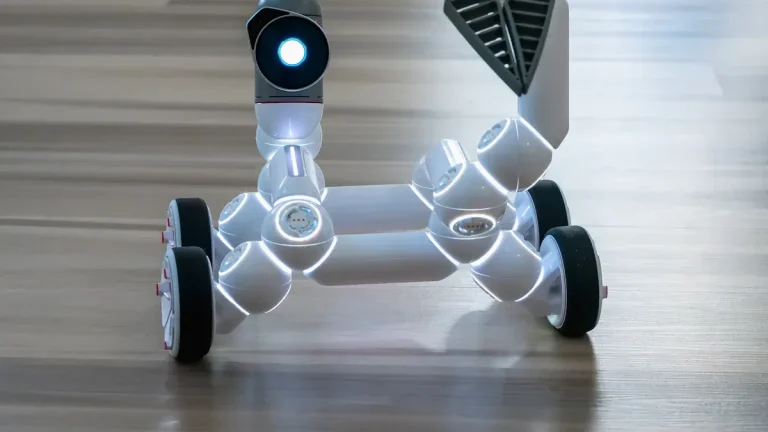
Lithium-ion batteries have revolutionized energy storage with their versatility and efficiency. The various types of Lithium-ion batteries include Lithium Cobalt Oxide (LCO), Lithium Iron Phosphate (LiFePO4), Lithium Nickel Manganese Cobalt Oxide (NMC), Lithium Nickel Cobalt Aluminum Oxide (NCA), Lithium Titanate (LTO), and Lithium Manganese Oxide (LMO). Each type offers unique characteristics, making them suitable for diverse applications.
Understanding the differences between these types of Lithium-ion batteries is critical for industries like transportation, consumer electronics, and industrial applications. For instance, NCA batteries deliver a high specific energy of 200–260Wh/kg, while LTO batteries excel in cycle life, lasting up to 7,000 cycles. This knowledge ensures you can select the most efficient solution for your operational needs.
Key Takeaways
Lithium-ion batteries have different types with special features. Knowing these helps pick the right battery for each use.
If you need high energy, LCO and NMC batteries work well. They are great for gadgets and electric cars.
Safety matters when choosing batteries. LiFePO4 batteries stay cool and are good for medical and industrial uses.
Part 1: Types of Lithium-ion Batteries and Their Characteristics

1.1 Lithium Cobalt Oxide (LCO)
Lithium Cobalt Oxide (LCO) batteries are among the most widely used types of lithium-ion batteries, particularly in consumer electronics like smartphones and laptops. These batteries are known for their high energy density, which ranges between 180–230 Wh/kg, and a nominal voltage of 3.7V. This makes them ideal for applications requiring compact and lightweight energy storage solutions.
Recent studies have shown that LCO batteries can achieve improved cycle performance and stability through polymer surface modifications. For instance, research highlights that applying a polymer coating to LCO batteries charged at high voltages (4.5V) helps maintain their crystal structure, even after extensive cycling. This innovation enhances their durability and reliability, making them a preferred choice for portable devices.
Tip: If your business involves manufacturing compact electronics, LCO batteries provide an excellent balance of energy density and size efficiency.
1.2 Lithium Iron Phosphate (LiFePO4)
Lithium Iron Phosphate (LiFePO4) batteries, also known as LiFePO4 Lithium batteries, are celebrated for their exceptional safety and long lifespan. With a nominal voltage of 3.2V and energy density ranging from 100–180 Wh/kg, these batteries are highly durable, offering 2,000–5,000 charge cycles. Their high thermal stability makes them a reliable choice for industrial applications and energy storage systems.
A comparative study on thermal runaway behavior revealed that LiFePO4 batteries exhibit superior resistance to mechanical abuse and overcharging. This makes them a safer alternative for applications where reliability is critical. Additionally, their environmentally friendly composition aligns with sustainability goals, making them a cost-effective and eco-conscious option.
1.3 Lithium Nickel Manganese Cobalt Oxide (NMC)
NMC Lithium batteries combine nickel, manganese, and cobalt to deliver a balanced performance in terms of energy density, lifespan, and thermal stability. These batteries offer a nominal voltage of 3.6–3.7V and an energy density of 160–270 Wh/kg, with a cycle life of 1,000–2,000 cycles. Their versatility makes them a popular choice for electric vehicles (EVs) and medical devices.
A technical review highlights that NMC batteries have a low self-heating rate and impressive long-term performance, making them suitable for medium-to-high-range EVs. Their flexible design also allows for customization, catering to diverse industrial needs.
Battery Type | Unique Characteristics | Applications | Advantages |
|---|---|---|---|
NMC | High energy density, low self-heating, good lifespan (~2000 cycles) | EVs, medical devices | High thermal stability, flexible design |
Tip: If your business operates in the EV or medical sector, NMC batteries provide a reliable and efficient energy solution.
1.4 Lithium Nickel Cobalt Aluminum Oxide (NCA)
Lithium Nickel Cobalt Aluminum Oxide (NCA) batteries are renowned for their high specific energy, ranging from 200–260 Wh/kg. These batteries are widely used in electric vehicle powertrains, particularly by leading manufacturers like Tesla. Their robust chemical stability and good lifespan make them a top choice for high-performance applications.
Aspect | Details |
|---|---|
Battery Type | Lithium Nickel Cobalt Aluminum Oxide (NCA) batteries |
Performance Advantages | Substantial performance increases over state-of-the-art technologies due to nickel-rich CAMs. |
Applications | EV powertrains (e.g., Tesla) |
Advantages | High energy density, good lifespan |
Note: For businesses in the EV industry, NCA batteries offer a competitive edge with their superior energy density and performance.
1.5 Lithium Titanate (LTO)
Lithium Titanate (LTO) batteries stand out for their exceptional safety and rapid charging capabilities. With a nominal voltage of 2.4V and energy density of 60–90 Wh/kg, these batteries offer an unparalleled cycle life of 10,000–20,000 cycles. Their unique spinel structure facilitates a three-dimensional pathway for lithium-ion transport, enabling high current rate charging and discharging.
Metric | Result |
|---|---|
Capacity after 1000 cycles | 170 mAh g−1 |
Charge time at 50C rate | 72 seconds |
Voltage range | 1.3–2.5 V |
These characteristics make LTO batteries ideal for EV charging stations, aerospace, and other applications requiring rapid energy replenishment.
Tip: If your operations demand fast charging and long-lasting batteries, LTO batteries are a safe and efficient choice.
1.6 Lithium Manganese Oxide (LMO)
Lithium Manganese Oxide (LMO) batteries are recognized for their superior thermal stability and safety. With a nominal voltage of 3.7V and energy density of 120–170 Wh/kg, these batteries are commonly used in power tools, medical devices, and security systems.
Aspect | Details |
|---|---|
Market Drivers | Safety regulations driving adoption in medical and security sectors. |
Technological Roadmap | Advancements in battery technology enhancing safety and reliability. |
Manganese in the cathode material enhances thermal stability, reducing the risk of thermal runaway. This makes LMO batteries a safer option for applications where reliability is paramount.
Note: For businesses in the medical or security sectors, LMO batteries provide a dependable and safe energy solution.
Part 2: Comparing Different Types of Lithium Batteries

2.1 Performance and Energy Density
Performance and energy density are critical factors when evaluating lithium batteries for various applications. Among the different types of lithium-ion batteries, LCO Lithium batteries stand out with an energy density of 180–230 Wh/kg, making them ideal for consumer electronics like smartphones and laptops. On the other hand, NMC Lithium batteries offer a balanced energy density of 160–270 Wh/kg, which suits electric vehicles requiring both power and longevity.
Battery Type | Energy Density (Wh/kg) | Applications | Key Advantage |
|---|---|---|---|
LCO | 180–230 | Consumer electronics | High energy density |
NMC | 160–270 | Electric vehicles | Balanced performance |
LiFePO4 Lithium battery | 100–180 | Solar energy storage, industrial | Long lifespan |
Advancements in battery technology have led to a fivefold increase in energy density over the past 30 years, with projections of 600–800 Wh/kg by 2030. This progress ensures that lithium batteries continue to meet the growing demands of modern applications.
Tip: For applications requiring high energy density, such as EVs or portable devices, NMC and LCO batteries are excellent choices.
2.2 Safety and Thermal Stability
Safety is paramount in industries like medical and security systems, where reliability is non-negotiable. LiFePO4 Lithium batteries excel in thermal stability, withstanding temperatures up to 120°C before self-heating begins. This makes them a safer option compared to lithium manganese oxide (LMO) batteries, which have a self-heating onset temperature of approximately 58–136°C.
A study comparing thermal runaway characteristics ranked battery safety as follows:
18650 LFP > 14500 LFP > 26650 LFP > 21700 > 18650 non-LFP > 14500 non-LFP.
This ranking highlights the superior safety of LFP batteries, especially in high-risk environments.
Note: For industries prioritizing safety, such as medical or infrastructure, LiFePO4 batteries provide unmatched reliability.
2.3 Lifespan and Cost Efficiency
The lifespan of lithium batteries varies significantly based on their chemistry. LTO batteries lead the pack with an impressive cycle life of 10,000–20,000 cycles, making them ideal for applications requiring frequent recharges. In contrast, NMC Lithium batteries offer a cycle life of 1,000–2,000 cycles, balancing cost and durability.
Feature | LTO Batteries | NMC Batteries | Advantage |
|---|---|---|---|
Cycle Life | 10,000–20,000 cycles | 1,000–2,000 cycles | Long lifespan (LTO) |
Cost per kWh | Higher upfront cost | Moderate | Cost efficiency (NMC) |
Over the past three decades, lithium battery costs have dropped by 99%, making them more accessible for industrial and commercial use.
Tip: For applications requiring a long lifespan, such as EV charging stations, LTO batteries are a worthwhile investment.
2.4 Applications in Industrial and Commercial Sectors
Lithium batteries power a wide range of industrial and commercial applications. NMC Lithium batteries dominate the electric vehicle market due to their high energy density and balanced performance. In industrial settings, LiFePO4 Lithium batteries enhance the efficiency of forklifts and automated guided vehicles (AGVs).
Medical devices: Lithium batteries provide reliable power for portable equipment.
Security systems: LMO batteries ensure safety and reliability in critical operations.
Infrastructure: Lithium batteries support backup power systems and renewable energy storage.
The growing adoption of Industry 4.0 technologies further emphasizes the importance of lithium batteries in industrial applications.
Note: For tailored solutions in industrial or commercial sectors, consult Large Power’s custom battery solutions.
Understanding the types of lithium-ion batteries is essential for making informed decisions in industrial and commercial applications. Each battery type offers unique advantages, from the high energy density of NMC batteries to the exceptional safety of LTO batteries. Selecting the right battery ensures optimal performance and aligns with your operational goals.
The lithium-ion battery market is projected to grow significantly, driven by:
A rise in demand for consumer electronics, with market value expected to exceed USD 112 billion by 2032.
Advancements in battery technology, enabling faster charging and higher energy densities.
Increased reliance on laptops due to remote work and digital learning.
Source | Key Findings |
|---|---|
MarketsandMarkets | Reliable power sources in automation-heavy sectors minimize downtime and improve efficiency. |
Credence Research | Lithium-ion batteries reduce operational costs with high energy density and low maintenance. |
Mordor Intelligence | Digital infrastructure expansion, especially 5G networks, drives industrial battery adoption. |
Consulting with manufacturers or experts ensures you receive tailored lithium battery solutions that meet your specific needs. This approach maximizes efficiency and supports long-term success.
FAQ
1. What is the most energy-dense type of lithium-ion battery?
Lithium Nickel Cobalt Aluminum Oxide (NCA) batteries offer the highest energy density, ranging from 200–260 Wh/kg. These batteries are ideal for applications requiring compact, high-performance energy storage.
2. Which lithium-ion battery is best for safety-critical applications?
Lithium Iron Phosphate (LiFePO4) batteries excel in safety due to their superior thermal stability and resistance to overcharging. They are widely used in medical devices and industrial systems.
Tip: For safety-critical environments, always prioritize batteries with proven thermal stability and reliability.
3. How do I choose the right lithium-ion battery for my needs?
Evaluate your application’s requirements, such as energy density, lifespan, and safety. Consult with experts or manufacturers to ensure the battery aligns with your operational goals.
Note: Custom battery solutions can optimize performance for specific industrial or commercial applications.






